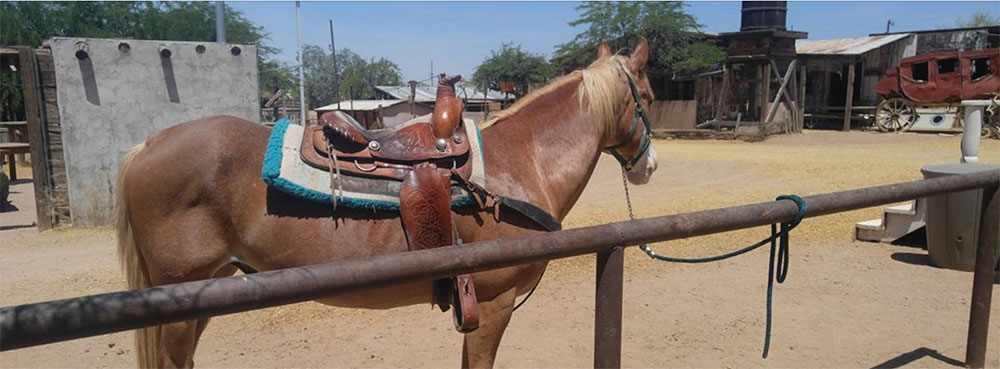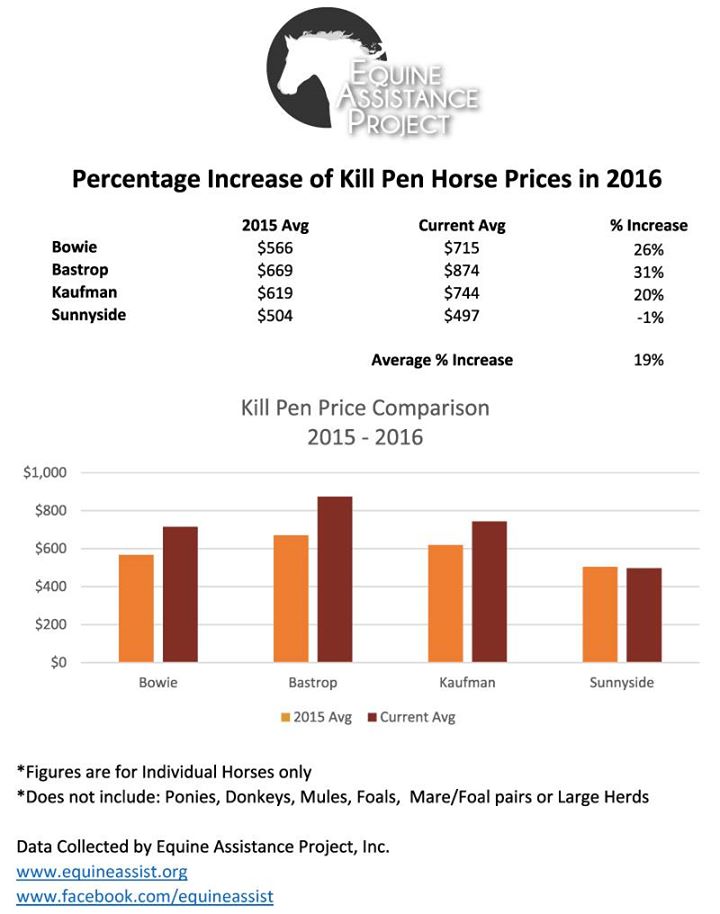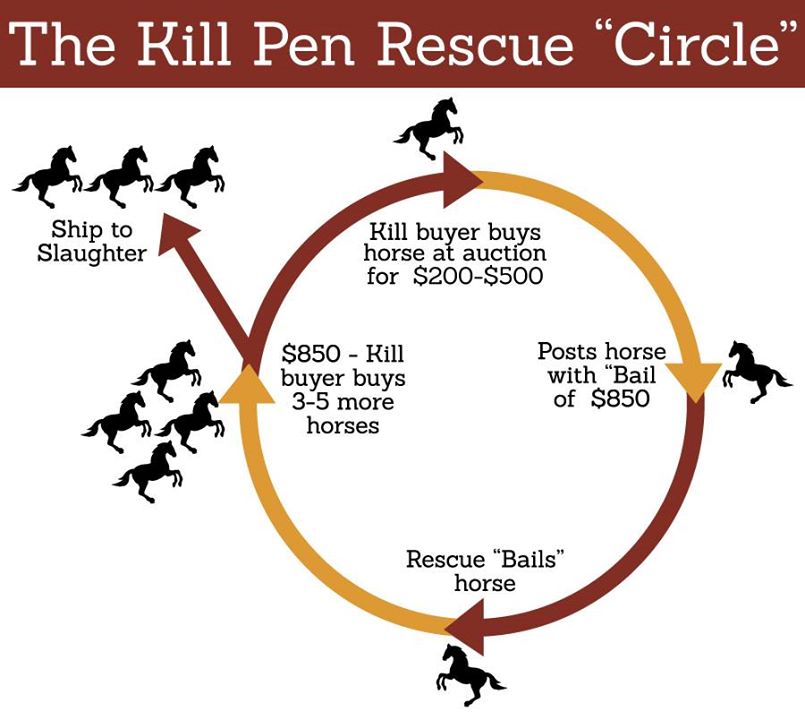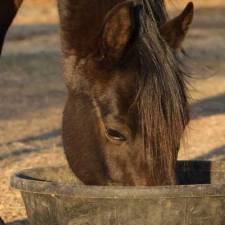
EIE has the largest Rehoming directory in the world where people can find a horse.
by Liberty Vallance
My name is Liberty Valance, and I own a kill pen horse. And it is because of my kill pen horse that I decided to pursue this area of the equine industry further. I, myself, was was ready to jump headlong into this cesspool and use my extensive equine experience to start pulling horse regularly to make a difference in their world.
I started doing kill pen horse transports here and there, and I have been to the feed lots in person. But I have a college degree in business and law, and I have been heavily involved in the horse industry for 36 years.
The more I delved into this particular activity, the more it didn’t make sense. I dug until it did. I don’t feel bad for buying Valen because he was my teacher, as horses often are the best, and I wouldn’t know now what I didn’t know then without him. This is what I learned. I didn’t write this to tell you stop caring.
In my travels, I have learned that so many people just do not have the first idea of what’s really going on in this business. Horse traders have always had a reputation for dishonesty, but for some strange reason people see “kill pen” and think these savvy businessmen are suddenly running a charity. It’s not a message to promote or discourage slaughter. It’s just.....the truth.
Kill pen horses. It starts with a picture and a cry for help. You see a beautiful horse in an advertisement and a plea for salvation. “Can anyone save him?!” He has a bail amount of $850+ and a deadline hanging over his head with a ship date. You want to cry for him.
You find a way to scrape together the cost of bail, quarantine, and shipping, and extra board, and you bring your new boy home. You feel good because you saved a life from being loaded onto a truck headed for a Mexican slaughter house. .........Or did you? Let’s start at the beginning.
Where do kill pen horses come from?
Kill pen horses come from local livestock auctions, Craigslist ads, free-bee ads, and even websites like Dreamhorse if a horse is being under-valued enough. There can be many reasons a horse ends up there: bankruptcy, sudden hardship on the farm, death in the family, etc. The horse is taken to the auction usually because it’s highly time consuming to sell a horse privately.
Nobody actually “puts” a horse in the kill pen, and they’re not sold at auction specifically to kill pen brokers. They’re just....sold....to the highest bidder, whoever that is. The kill pen brokers scour the auctions and internet looking for horses to fill a weekly quota they receive from processing plants in Mexico and Canada. Horses are sold at action by the pound.
In general, the average horse sells for about $400-$500. All of this is very normal...Very “business-as-usual”...and has not changed much in the past several decades (with the exception of a few Dept of Agriculture laws putting restrictions on the age and health of animals to be shipped for processing.)
However, very recently, this corner of the horse industry has seen a sudden surge in profits with the advent of a new trend called “Feed Lot Frenzy”.
In the past, a public person could approach a feed lot and offer to buy their stock privately, if they wanted to, before it was shipped to Canada or Mexico. It was not uncommon to purchase a horse from a kill pen for a few dollars over meat price. The broker got his money back plus a little extra for his trouble, and he would always take that money back to the auction and replace the purchased horse easily enough.
However, in recent years, the meat brokers have begun to capitalize on the idea of selling horses to the public for a much larger profit than they would ever make from the slaughterhouses. Higher profits mean less money out of pocket. Since 2015, the price of “kill pen horses” has tripled and quadrupled even though the price per pound of horse meat has remained fairly constant.
In 2016, the industry saw a surge in kill pen profits, while the number of horses actually being exported for processing was unchanged. In 2017, the prices were even higher, averaging from $850 on the low end to as high as $3000 on some horses.

“Who cares what they make as long as we’re still saving a life from a horrible death.” This statement actually DEFENDS the kill pen scam operation, even though you may not realize it. This is where the game begins. Since 2015, meat brokers have learned that they can not only charge whatever they want for a horse in their pen, but that people won’t even argue the price nor take the value of the creature into consideration if they believe it is in danger.
Many unhandled, greenbroke, injured horses are being sold for top dollar where they would never have sold on the open market for such ridiculous prices. In 2015 and 2016, brokers were only paying meat prices for their horses they purchased at action. They would turn around and sell it to the public and double their prices, and if the horse didn’t sell publicly it could still be sent for processing.
This is not the case anymore. Kill pen buyers have learned that they can purchase ANY horse for ANY price and sell it from their lot at whatever price point they choose. This means that they are no longer paying meat prices at the auction, as was disclosed in a conversation with a kill pen administrator.
“Some horses cost more because they were more expensive at the auction.” This is where the game gets dirty.....
What if I told you that the kill pen horse you’re about to buy will never go to Mexico or Canada? This is a business math problem. It’s economics. Mexico and Canada do not care about the horse’s training or its purpose or how pretty it is. They only want the meat.
They are not paying extra because a horse is dead broke or has registration papers. Mexico and Canada are paying meat prices and meat prices only. So, if the broker paid $0.80/lb for a horse, and Mexico is only paying the current market rate of $0.40/lb, does it make sense that the kill pen buyer will be buying horses for $800 and selling them for $400 a week later? No.
This is a business. No one goes into business to lose money or break even. The idea is to make a profit. Even a horse purchased at $0.50/lb (or any price over market) is a loss to the kill pen. There is no way a business man is going to spend $500 to give his product away next week for $400 or even $450.
And with as many head of horses as these pens deal in weekly, the loss would be astronomical...hundreds of thousands of dollars flushed down the toilet just to see if somebody wants to buy a horse? Hardly.
Here’s how it works
The kill pen buyers have a quota that is given to them from a contract with the slaughterhouses that they must fill. Let’s say, for example, that this week Mexico is asking for 100 head of horses. In order to keep their business, the kill pen must provide the processing plant with 100 horses or the plant will seek their supply elsewhere. Economics 101.
So, if the slaughter pen sells 50 horses to the public during the week, he STILL needs 50 horses to complete his order or risk losing his business contact. He will send 100 horses to Mexico whether you buy them or not, BUT remember that we said that he actually paid MORE for most of the horses that are offered to the public? He won’t sell those to Mexico.
In fact, the horses that are now being offered to the public for sale on the internet are SURPLUS horses called “riders” that the kill pen has purchased specifically to sell to the public, NOT to the slaughterhouse. (Note: Rider doesn’t mean the horse can be ridden. It’s just the term they use for a horse that’s suitable to sell to the public as a pet, including minis, donkeys, foals, etc).
They will never be offered to the slaughterhouses because he would take a loss on them. The horses DO have a shipping date on them, but they will not ship to the slaughterhouses. They said the horse is shipping...they just didn’t exactly tell you where...you just assumed. The kill pen will make sure that piece of information is left off and let you assume.
In fact, they even list horses with shipping deadlines that are illegal to ship for processing, but they don’t want you to know that either because they you won’t buy it if it’s not in danger. The evidence against this scam is overwhelming.
Check out this link from the Dept of Agriculture on slaughter horse shipping requirements.. As you can see, there are loads of horses with “shipping deadlines” listed on these kill pen pages that are illegal to ship for slaughter at all.
Welcome to the world of used cars for horses. “Kill pen horses” who do not sell will be shuttled to another sale lot or auction in another town somewhere where they can be sold as saddle horses to someone else. If your inventory doesn’t sell at your lot, ship it to a different one...or grant it a magical extension because we have a few buyers on the hook.
They have a huge network for selling horses at their disposal. Facebook is only one part of that network. The kill pens create a false emergency, fleecing the public into thinking that the pretty horse is going to die if they don’t buy it, when the truth is, he’s just being put on a truck to go to another sale lot. So where does he get the other 50 horses for quota?
“Saving is a life is saving a life”. Not quite. Not every horse that goes to slaughter is offered to the public for sale. You never see the nut cases, the un-rideables, the bronc ponies, the sick. etc. You are only ever offered the eager, pretty, willing, workable horses.
As we’ve already discussed, the horse that is being offered to you by the kill pen is not in any actual danger of being slaughtered as this practice would end up costing the brokers hundreds if not millions of dollars in loss every year. You may think that, regardless of price, at least it stops the horse from being shuttled around from sale to sale.
That is true, but we need to back up and see where these “riders” come from. Remember that Mexico has a weekly quota of 100 horses it must receive. If you purchase 50 horses from the kill pen, it doesn’t mean that only 50 horses will ship. Mexico and Canada have deadlines. They have a product to produce. If they do not receive their stock, they will buy from another kill yard.
They are not granting magical extensions for the public to buy their quota out from under them. They have clients, too. 100 horses will ship every Monday morning, regardless of how many get “rescued”.
You didn’t actually save anything. In fact, buying a kill pen horse at the prices set by the feed lot actually results in MORE horses in the kill pens purchased by kill pen brokers. The horses you are being offered are SURPLUS. There is a common misconception that when you purchase a kill pen horse, you are buying a horse that was already on the lot going to slaughter.
This is what they want you to think. However, your horse was not part of that shipment and never was. You are buying a horse that was EXTRA...in addition to...that shipment, purchased specifically to sell to you, the public...as a fundraiser. The broker takes the proceeds from the sales of rider horses and goes back to the auction or the internet and buys 3-4 more unsaleable horses to fill his quota.
So, he doesn’t have to put out any money of his own to buy the real slaughter horses. You just handed it right to him! He sold one horse and goes and buys 3 or 4 more that no one will ever have the chance to rescue. Your horse was never going to slaughter, however, the next four horses he buys with your horse’s money are for his quota, and they are definitely going with no chance of being saved.
Buy 1, condemn 4. He just figured out how to get the horse community, many of whom are adamant against slaughter, to not only completely fund 100% of his slaughter operation, but to pay for his inventory on top of it.

We know that when we go to look at a horse in the regular world that there are several things that people do to be dishonest to separate us from our money...people ace their horses to make them behave and bishop their teeth to make them look young, but for some reason when we talk about kill pens, we automatically switch to thinking that these kill buyer guys are running a charity letting us buy their horses out of the goodness of their hearts.
This is a million miles from what they’re really doing. When we purchase these kill pen horses that are offered to us, not only do we condemn 3 or 4 more other horses who will never be offered for salvation, we take these riders away from legitimate rescues and forever homes.
It would be one thing if these “riders” were the leftovers at the end of the day that no one wanted to buy, but the sad truth is that these horses were bid on at the auctions by horse rescues and families looking for pets. The auction world is a small one. Everybody knows everybody. The kill buyers do not sit on their hands when they see a rescue...or a ranch...or a mom and little girl...step up to purchase a horse.
They need that horse to sell online with a false deadline so they can buy their quota horses. That’s why they spend the extra money above market price. They know who they are bidding against. It is their business to know. They play games with the rescues, knowing that the rescues have limited resources.
One game is to bid the price way up on a single horse and then drop out, forcing the rescue to spend twice its budget on one horse. If the rescue doesn’t win that horse, the kill pen gets it. If they bid up to win that horse, the kill pen gets everything they can’t buy because the rescue is out of money.
It’s a losing game the kill brokers play to waste the funds of the rescues to get them out of the way, as was even reported in this news story in Colorado. In this video clip, the featured horse rescue touches on the tax break and mind games often played by the meat buyers.
Thus, not only did our kill pen purchase completely fund this feed lot’s slaughter operation, we actually stopped a horse from getting a legitimate forever home by putting tens of thousands of dollars in the pockets of the meat brokers to use against the horse rescues and the families looking for pets.
So......how do we fix this? It’s a math problem. That’s all it is. We worked it forward, now we need to work it backwards.
Here are some things you can do to stop this scam and truly make a difference in slowing the slaughter industry.
- Buy from the auction yourself. You were willing to spend $850-$1500 when you thought it was going to die in the kill pen, what’s the difference if you spend it there or spend it here? If you buy from the auction, you are giving the original owner the money and helping them out, not the kill pen, and you are bidding the price up into the killer’s profit margin.
If he can’t make a profit, he drops out. There is a common misconception that these kill pen horse auctions are thousands of miles away. They’re not. They’re right down the street. Every farming community in America has one, and these backwoods auctions are where the big brokers are getting their horses shipped in from. Contact your local Dept of Agriculture office to find out where it is held and what days.
- Buy local. Now that you know where the brokers are getting their horses and what they’re doing with them, if you want to get into saving them, look on Craigslist and Dreamhorse for the horses that nobody wants.
Give the money to the owner instead of the kill pen. Not only could you be saving one life, but if you had a budget of, say $2000, you might be able to pick up 2 or 3 horses from an advert instead of just 1 from a kill pen.
- Adopt. There are horse rescues all over the country trying to head the kill brokers off at the pass. They go to the same auctions. If you don’t have time to go to the auction yourself, contact a local rescue and adopt a horse they have won in the past.
There are even breed-specific adoption and rescue agencies out there if you’re looking for a horse in particular. These adoption agencies are actually more transparent when it comes to health issues than the kill pens, who have no trouble lying about age and health as their vets only evaluate horses for market, not pets.
If you are an individual who would like to take a stand against this industry but don’t have the resources to take on a horse, yourself, donate to a horse rescue. Give them the money to outbid the kill pens.
- Adopt from non kill pen rescues. Double check with the horse rescue to see if the horse came from the kill pen.
There are many horse rescues who bail horses straight from the kill pens, which doesn’t do anything but continue the circle of slaughter just like if you had purchased the horse yourself. They do not receive a discount. They’re not given any special considerations.
The kill pens see them coming and buy horses specifically with these rescues in mind. It’s an ATM for them. They buy the horse and sell it to the rescue, then go buy 20 horses for the Mexico truck. It’s gut-wrenching to watch these rescues putting up bail for 5 or 6 horses every week, recognizing that there will never be an end to what is going on. They are not helping.
This situation is a water faucet of money. If you stop giving the kill pens all this extra money to buy horses with, they won’t have the money to buy these surplus riders with and they’ll have to go back to doing it the old fashioned way....using their slim profits made directly off of Mexico and Canada to put back into their business, instead of this side business they’ve got going on.
As it stands now, they’re making hundreds of thousands of dollars a year in extra profit off of our “good deeds”. If you're paying retail, it's not a rescue. Let's put this in terms we can all agree on: Puppy Mills. If I went to a puppy mill pet store at the mall and BOUGHT all their designer dogs, they were SOLD, not adopted out, and they were SOLD for a profit.
I didn't save any lives. In fact, I made it worse: The store is out of stock. The stock needs replenished. The store goes and buys more puppies, and maybe even increases the order because the last batch practically flew off the shelf. Supply and demand. "People buy my puppies. I just made an easy couple thousand dollars. I’ll stop breeding her."
Right? Of course not, but for some reason that's what people think the horse brokers do. How do we stop the puppy mills? Easy! Don’t buy from puppy mill stores. Everybody knows that. Yet in the slaughter pipeline, people think that buying all the stock off the kill pen shelves is saving lives.
You will never see a dog rescue BUYING dogs out of a puppy mill shop, but all day long you will see horse “rescuers” BUYING horses from the kill pen stores. Mexico and Canada aren’t the ones giving the horse brokers the money to go buy more slaughter stock....we are. We are the consumers. And they’re are laughing at us...All the way to the bank.
Credits:
Kill Pen Price Comparison graph courtesy of Equine Assistance Project
Kill Pen Rescue Circle graphic courtesy of Equine Assistance Project
EIE has the largest Rehoming directory in the world where people can find a horse.
There are more informative articles in our section on Retire & Rehome.
Are you interested in promoting your business or sharing content on EIE? Contact us at info@equineinfoexchange.com













